- News
- Reviews
- Bikes
- Accessories
- Accessories - misc
- Computer mounts
- Bags
- Bar ends
- Bike bags & cases
- Bottle cages
- Bottles
- Cameras
- Car racks
- Child seats
- Computers
- Glasses
- GPS units
- Helmets
- Lights - front
- Lights - rear
- Lights - sets
- Locks
- Mirrors
- Mudguards
- Racks
- Pumps & CO2 inflators
- Puncture kits
- Reflectives
- Smart watches
- Stands and racks
- Trailers
- Clothing
- Components
- Bar tape & grips
- Bottom brackets
- Brake & gear cables
- Brake & STI levers
- Brake pads & spares
- Brakes
- Cassettes & freewheels
- Chains
- Chainsets & chainrings
- Derailleurs - front
- Derailleurs - rear
- Forks
- Gear levers & shifters
- Groupsets
- Handlebars & extensions
- Headsets
- Hubs
- Inner tubes
- Pedals
- Quick releases & skewers
- Saddles
- Seatposts
- Stems
- Wheels
- Tyres
- Health, fitness and nutrition
- Tools and workshop
- Miscellaneous
- Cross country mountain bikes
- Tubeless valves
- Buyers Guides
- Features
- Forum
- Recommends
- Podcast
TECH NEWS
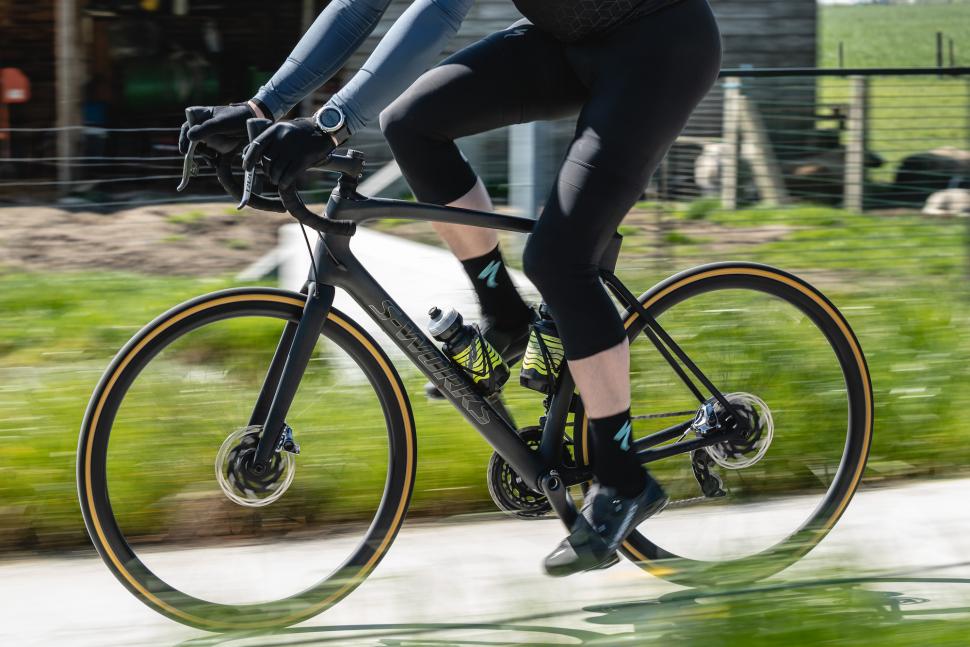 Specialized Roubaix first ride9.jpg
Specialized Roubaix first ride9.jpgFirst ride: Specialized S-Works Roubaix with Shimano Dura Ace Di2 + in-depth with the tech video
Where better to first ride the brand new Specialized Roubaix than the cobbled roads of Belgium and northern France that it was designed for, so that’s where I found myself for several days riding the famous pave used by the Tour of Flanders and Paris-Roubaix spring classic races to see whether the updated endurance bike lives up to the company’s motto of "smoother is faster”.
Read all about the tech changes in this first look article
I’m glued to the wheel of the Lion of Flanders, aka Johan Museeuw, multiple Paris-Roubaix and Tour of Flanders champion during the 1990s. Alongside him is the potential heir to the throne, Yves Lampert wearing the Belgian national road race champion jersey. Watching these two incredibly talented riders glide over the pave is quite a sight to behold.
I’m not making it look nearly as effortless. But underneath me, the newly updated Roubaix with its Future Shock 2.0 and raft of other updates is doing a hugely impressive job of smoothing the cobbles and helping me to keep up with the Belgian duo dispatched to give us journos a lesson in riding pave.
It’s clear now, just as it was when I tested the original Roubaix, that the Future Shock is no gimmick. Let’s be honest, riding over cobbles isn’t all that much fun: it’s brutal, punishing, deeply unpleasant and definitely Type 2 fun. Unless you have a peculiar taste for pain, anything you can do to help take the edge off without resorting to a mountain bike has to be a good thing right?
Or maybe not? Maybe suspension on a road bike is a step too far? We’ve been here before of course. Bianchi has tried full suspension on a road bike in the past, and Gilbert Duclos-Lassalle and Andre Tchmil between them won Paris-Roubaix on three occasions using the RockShox suspension fork before it was banned by the UCI. Then of course, Peter Sagan won Paris-Roubaix on the Roubaix last year. Is it a step too far or natural evolution for road bikes in the face of worsening road surface conditions?
I’ve ridden many different bikes over these same cobbled roads, but none have afforded as smooth a passage over the ancient roads as the Roubaix. It purrs along the cobbles, the Future Shock 2.0 blunting the vibrations and shielding me from the full terror of smashing skinny tyres into brutal stones. There’s no doubt about it, it provides a lot more forgiveness over these roads than a regular rigid road bike. It’s certainly a very good advert for the benefits of suspension on a road bike for dealing with cobbles and generally rough roads.
Control and traction is also improved as a consequence of the Future Shock 2.0. Because the front wheel is able to move up and over cobbles, the front tyre can better maintain grip on the rain-soaked cobbles which improves how confident I feel throwing the bike into a fast corner on wet cobbles. On some of the more challenging Paris-Roubaix sectors I’m noticeably bucked around a lot less, and feel in more control and able to move the bike around to avoid holes, upturned cobbles and other riders.
Roubaix vs Arenberg
This was well demonstrated on the Arenberg. This 2.2km arrow straight cobbled road needs no introduction, you’ve all seen the pictures and video, you may have ridden it yourself in the popular Paris-Roubaix sportive (well worth doing if you haven’t). I’ve ridden it on many occasions on numerous different bikes. I can confidently say none have offered a ride as smooth, stable and controlled as the new Roubaix.
The Arenberg is tough in the dry, it’s terrifying in the rain! I’ll confess to a fair amount of trepidation as we headed towards the sector. How slippery would the cobbles be? Would it even be ridable? Was it downright dangerous and stupid to even attempt? All sorts of scenarios flashed through my mind as I turned off the main road onto the cobbles.
My heart rate spiking, grip tightening on the bars, eyeballs rattling inside my skull. The first few metres of the Arenberg are tremendously violent, the ride best described as jarring. Underneath me the Future Shock 2.0 is working overtime. You can definitely feel the difference it makes as you switch between open and firm by adjusting the dial. I continue along the sector as it first dips slightly, levels out than gradually rises to the finish.
My speed is nowhere near that of the pros, but at my mere mortal pace I’m finding it easier than any time previously I’ve ridden this cobbled road to keep the bike on the narrow crown which just about offers the best line choice. As I settle into the sector (it feels like it goes on for ever) my confidence increases as I realise the Roubaix lets me stay on the power with more ease. My momentum isn’t being dented with each severe impact against an upturned cobblestone or gaping hole, and neither is my body being subjected to the savage and constant hammer-blows it would be on a rigid road bike.
On-the-fly adjustment
Then at the end of the sector, when you can’t help by giggle at the sheer lunacy of it and feel amazed to have avoided a tumble, or have been forced onto the smooth path that flanks the pave, you return to blissfully smooth tarmac road, rotate the Future Shock 2.0 dial to the firm mode, and rejoin the remnants of the peloton and continue to the next cobbled sector.
It’s a direct response to people wanting more control over the Future Shock, to be able to choose when to deploy it. Operating the dial is very easy to do on the move. Twist left for open, twist right to firm up. It’s not entirely locked out, a big impact will still activate it, climbing and sprinting out of the saddle won’t.
The dial has a slightly knurled exterior and the graphic shows a graduated slider suggesting you can set it somewhere between the two extremes, but in reality it’s a two-position adjustment because it’s nearly impossible to feel the difference with small increments.
Some sort of suspension fork two-position dial with a big tab could work well I reckon, and make it visually easier to see which mode you’re in with a quick glance at the dial. Or, how about some remote satellite buttons mounted to the drops or hoods for operating it Specialized? Or voice activated commands. Now there’s an idea!
But it answers the demand for more control and it's easy to use and works well. Just remember to rotate it to open before you hit cobbled sector, though even if you do forget, as I did once, it does still provide some suspension.
Smoothness everywhere
Unless they were silky smooth, on regular roads I personally tended to leave the Future Shock 2.0 set to open. Even on a relatively smooth road you can still see and feel the suspension rippling away on smaller edges and cracks in the surface. And because the Future Shock is mounted above the frame and below the bars, it’s only suspending about 15% of your body weight. This ensures it doesn’t bob like a mountain bike suspension fork, in fact it doesn’t feel in any way odd when sprinting and climbing. It feels very normal actually, with the bike still feeling direct and engaging, but maybe not as sharp as the Tarmac, but that’s also due to the geometry differences.
Providing a balanced feel to the bike was also important, so the new Pave seat post and 65mm dropped seat clamp ensures there’s plenty of compliance at the saddle to create a bike that doesn’t have a disjointed feel between the bars and saddle. Having stepped straight off riding an aero race bike for three days around Flanders onto the Roubaix, you can definitely feel the saddle moving backwards, but not to the extent that it impacts pedalling efficiency. I couldn't tell if it's any more effective than the old CGR post without comparison testing.
Also apparent on the cobbles is the vastly more refined feel provided by the Future Shock 2.0. It’s smoother throughout its 20mm stroke and handles bigger impacts better with no noticeable bottom or top out, as could be experienced with the previous version. I noticed no harsh clucking at either limits of its travel.
The Future Shock 2.0 was also subjected to some pretty nasty weather, but it continued to work just fine at the end of a 90km gritty, muddy and wet ride. Obviously long-term testing will be needed to really test the durability.
Fantastic handling
Over three days of riding it’s also clear the Roubaix is a fantastic handling bike. The geometry is a bit more laid back than the Tarmac and Venge with a higher stack due to the Future Shock 2.0 and shorter reach, reflecting just who this bike is aimed at, but I achieved a comfortable and sporty position that looked after my bad back. It’s not quite as sharp and pointy as the Tarmac is, instead it’s a little calmer and the geometry differences account for a bit more stability at speed. But it’s still exciting and ruddy good fun to ride.
If do you crave want a more aggressive stance the company is now offering the pro fit Roubaix frame sets which have identical stack and reach to the Tarmac. If there’s one change I would probably have liked to make was swapping the Hover handlebar for a regular handlebar, which is definitely something a bike shop will do for you, especially if you get a bike fit first.
Is suspension faster?
Clearly, yes, because the Roubaix is evidently a fast bike even in my hands. The smoothness afforded by the Future Shock 2.0, Pave seat post and 28mm tubeless tyres definitely helps you to carry more speed over rough roads and cobbles. As was demonstrated on Carrefour de l’Arbre, my favourite cobbled sector on the Paris-Roubaix course.
It’s 2.1km of mashed up cobbles with tight turns and more holes than you can imagine, making it a really exciting but hard technical challenge. I’ve ridden along here on rigid bikes and wanted the madness to end after just a few hundred metres. The Roubaix on the other hand let me maintain speed, choose a line around the frequent hazards, and keep on powering to cross the end of the sector with a new Strava PR.
Okay, so using Strava is far from scientific, there are so many variables involved. But I’m not at my fittest at the moment and suffering from a bad back, yet being able to shave time off one of the hardest cobble sectors without really trying to totally shocked me. I was astounded if I'm honest with you. So clearly smoother is faster.
But the fact that suspension provides faster and easier progress over rough ground should really be no great surprise, there’s a reason why full suspension mountain bikes are faster than rigid mountain bikes and why all motorised vehicles utilise suspension. The tyres are effectively suspension and the reason bigger tyres and lower pressures are so popular right now is because they provide more suspension travel. But not 20mm of suspension as the Future Shock 2.0 provides.
So yes I think it does prove the validity of suspension in a road bike for improving speed and control. Whether you need or want it is another matter, and there's the distinctive looks which while better than the old bike does take some getting used to compared to how sleek the Tarmac is. There’s no denying the benefits of the Roubaix platform versus other endurance bike that rely on flex in the carbon frame and fork.
Watch the Roubaix on the famous Arenberg
What is the new Roubaix like to ride on the most famous cobbled sector of the Paris-Roubaix? Watch the video below where I strapped on a GoPro and rode the cobbles. In the rain. At a pace much slower than the pros.
Aero endurance
There’s also the new aerodynamic aspect, with Specialized saying the new bike is 24 seconds faster over 40km than the old Roubaix, and faster even compared to the Tarmac SL6. It’s much harder to quantify these claims so we can only take them at face value until independent testing, but to have a bike that is not only faster than the Tarmac, but also more comfortable, with only weight and handling responsiveness being the tradeoffs, seems a decent prospect to me.
This coming together of aerodynamics in an endurance bike is clearly a natural step in the evolution of the road bike, and indicative of how fast pro racing is - 2017 saw the fastest ever edition of Paris-Roubaix partly thanks to a generous tailwind. Specialized isn’t the first to bring two previously disparate technologies together: Trek has already combined aerodynamics and comfort in its Madone, but I wouldn’t be surprised to see more manufacturers looking at increasing the aero performance of their endurance bikes in the future as this category of road bike evolves.
Summary
A couple of rides is in no way a conclusive test, but first impressions are positive. Specialized has further refined the already highly capable Roubaix with a smoother and adjustable Future Shock, dropped some weight and improved the aerodynamics. There’s also the sensible decision to spec threaded bottom brackets across the entire range.
Not so good is the lack of mudguard mounts which seems a missed opportunity when there’s adequate clearance. And while the tyre clearance has increased, 33mm might fall short of where some people might have hoped the new Roubaix would have aimed for, but it does provide the Diverge for those that want even wider tyres.
As a package, the Roubaix is very compelling. On paper it’s more aero than the Tarmac SL6 but packs in more comfort so the question really has to be, unless you’re racing, why not choose the Roubaix over the Tarmac?
We’ve got a new Roubaix winging its way to the office for review now so watch out for more in-depth testing on Specialized’s new bike soon. I’ve only had three days to ride the new bike so I look forward to extending testing on more familiar roads to see how it fares.
More info at www.specialized.com
David worked on the road.cc tech team from 2012-2020. Previously he was editor of Bikemagic.com and before that staff writer at RCUK. He's a seasoned cyclist of all disciplines, from road to mountain biking, touring to cyclo-cross, he only wishes he had time to ride them all. He's mildly competitive, though he'll never admit it, and is a frequent road racer but is too lazy to do really well. He currently resides in the Cotswolds, and you can now find him over on his own YouTube channel David Arthur - Just Ride Bikes.
Latest Comments
- David9694 54 min 21 sec ago
Car crashes outside Poundland in Abingdon town centre...
- ktache 1 hour 8 min ago
I'm impressed by my DX1000, the keys look difficult for picking, though I'd like to seethe LPL having a go at one. And it definitely feels the part...
- dubwise 2 hours 22 min ago
So cyclists will be punished far heavier than killer drivers. Sums up the fkd up UK.
- HLaB 2 hours 35 min ago
I've done the 312 and other closed roads events like the Etape Caledonia and each time there is bad press like this in advance but on the day the...
- Rendel Harris 2 hours 35 min ago
It's not that surprising that Mr GrumpyGobshite hasn't seen the 20mph limit "stuck too [sic] in 47 years" as it was only reintroduced in 2004, it...
- Pub bike 2 hours 51 min ago
Spiral wound cables can expand and contract and possibly help with brake modulation, as well as make tighter bends. ...
- Burnsy Bhoy 4 hours 12 min ago
My TL200 rear light stopped working after 14 months - it seems IP ratings arent what they say on the tin! I have tried different brands and all...
- OnYerBike 10 hours 24 min ago
I've no idea what the situation is here, but I've seen plenty of "under construction" cycle lanes where there are only signs/barriers around the...
- the little onion 10 hours 31 min ago
whereas the whole point is that they didn't hit you this time
- Tom_77 10 hours 44 min ago
AIUI an entering-circulating accident [sic] would be when the vehicle entering the roundabout fails to give way to the vehicle circulating.
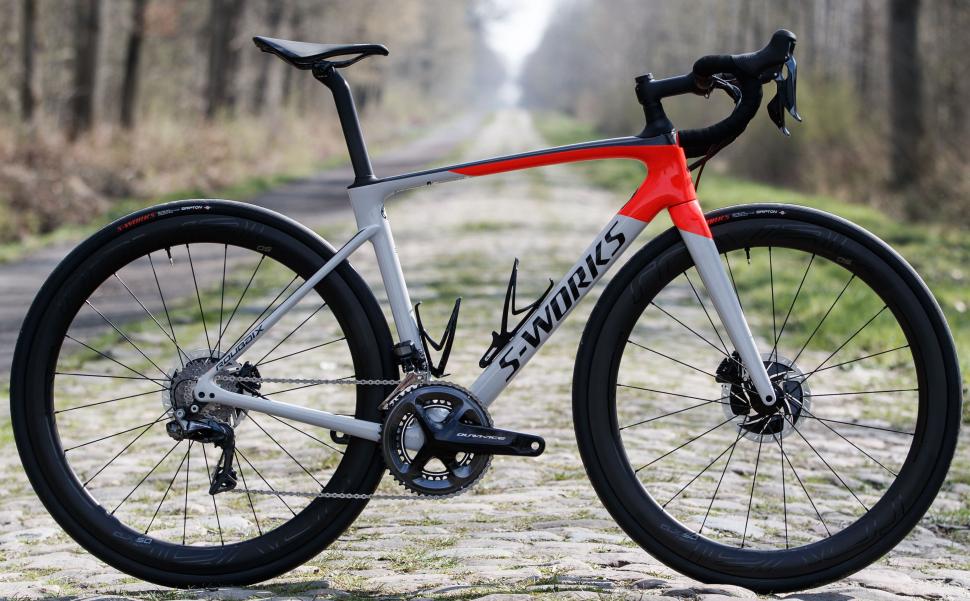

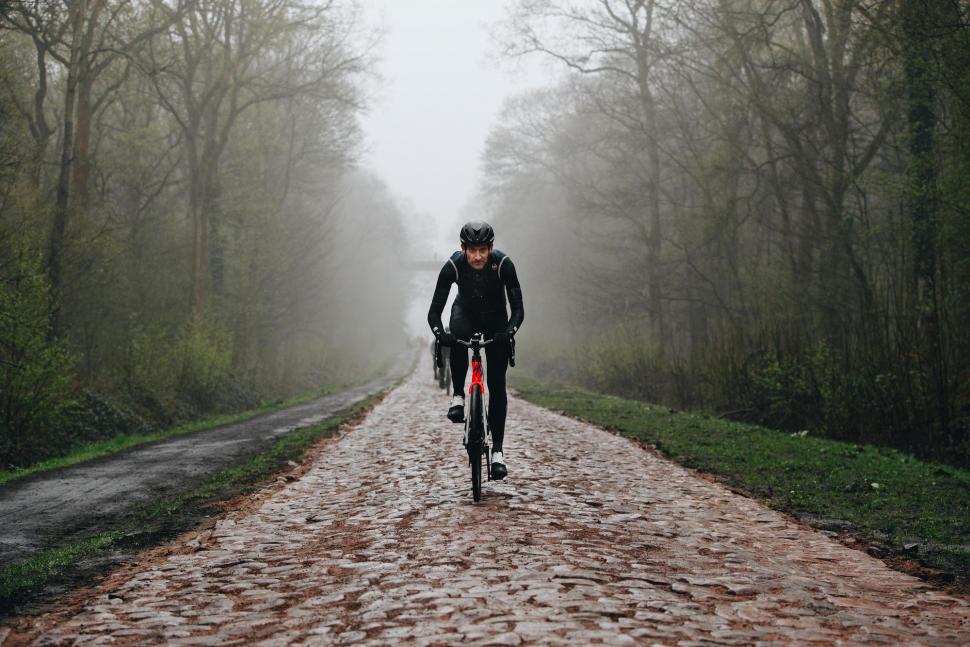
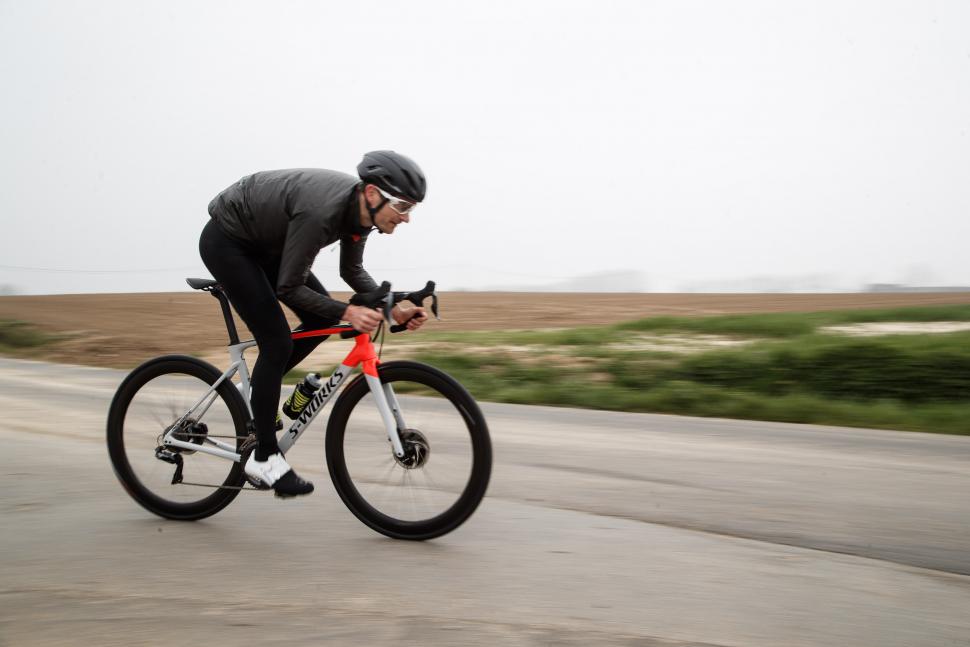

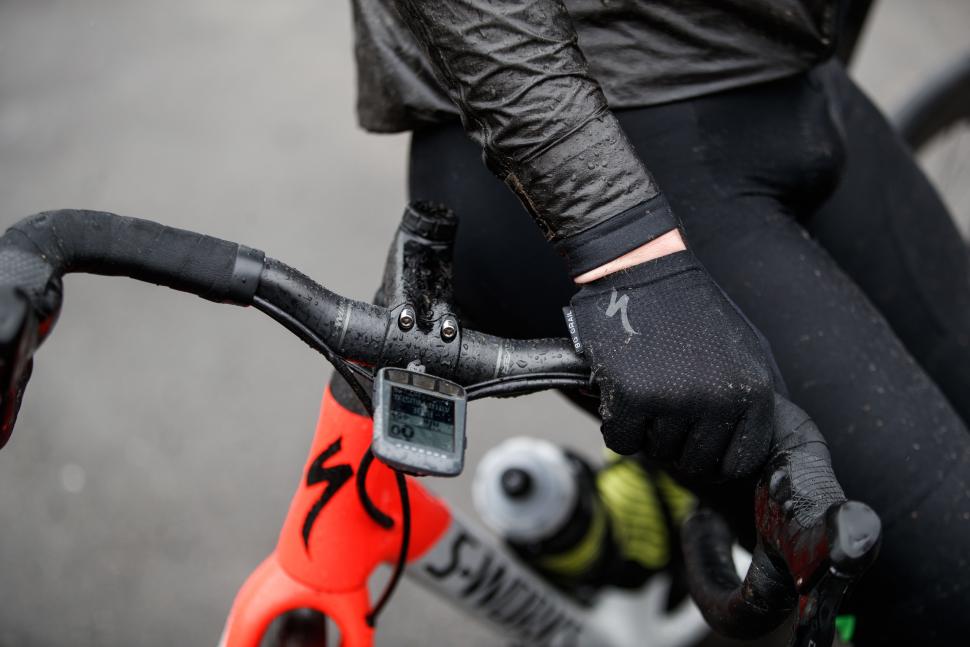

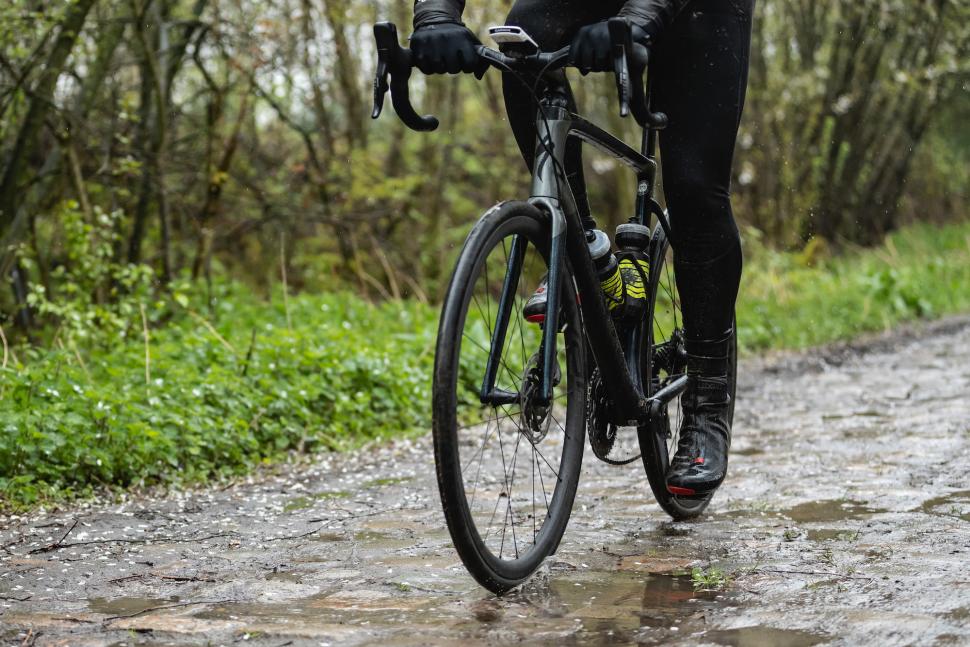

Add new comment
13 comments
Future Shock, is that when Specialized is solving your comfort problems? Since the bulk of a riders weight is not on the handlebars, wouldn't it make more sense to have an active suspension seatpost?
What are service intervals for suspension? Hours like on mountain bikes?
They say it's 500 hours or 1.5 year service intervals, whichever comes first
The scary thing to me is the price. The tarmac disc expert with ultegra is a fairly hefty NZ$6800, but the similarly speced roubaix expert is NZ$9500. That's one expensive shock
I wonder if it's the year model and the groupset - in the UK Specialized have the Roubaix Expert 2020 at £5400 and the Tarmac Expert at £ 4500, but the Tarmac is a 2019 model (there's no Tarmac 2020 there yet) and has mechanical Ultegra vs the Ultegra Di2 on the Roubaix.
But that's quite a good price tag (or at least the currency conversion). The US list price for the Roubaix expert is 6000USD which are around 8900NZ. In Germany we have to pay 5.999€ which are around 6770USD or 10100NZ$.
Specialized Bikes are then normally sold for 20-30% below the list price after one year. This is similar for Trek. The Domane SLR 6 Disc list price in 2017 was 5500€. After one year it was sold for 3000€.
Taking a break from prepping my bike for Saturday I glances at Road.cc to find this. Mudguards? Suspension? Why not just ride a mountain or gravel bike? But what's the point in riding Paris-Roubaix at all if you're not doing it on a conventional road bike? Might as well just try to circumvent all the pave (they're not cobbles).
I 'get' the Roubaix thing...it's a name to market a comfortable sportive bike to riders. But what started as an endurance-bike evolution has clearly gone too far. Perhaps the guardians of the pave should ban such machines?
https://twitter.com/ProCyclingStats/status/1115891054350352385
Yep - the Arenberg is either fenced or ploughed for the race so there's no choice but to ride the cobbles, which are truly awful. Equally if you want to make up some places you have to take the less smooth line usually.
Having said that it's pretty clear that Hunt's recent marketing KoM in the Arenberg was done on the nice smooth path that you can see in these pics.
When the vast majority of the time the riders can simply move off the cobbles, what's the point? There always seems to be a nice relatively flat channel right at the side of the road, either make it cobbled with no run off or simply don't bother because most of the riders are avoiding the cobbles anyway a significant portion of the time.
Isn't the whole point of the cobbles to make it a challenging course both physical and mental, isn't it about getting your set up balanced, picking the right tyres, the right wheels, the right gear ratios and indeed the best line over the cobbles and when you can put the power down and when not, when to just let the bike run and when to put in some effort to control? Suspension is simply flattening out/making it smoother, might as well just simply forget the cobbled sections and go onto some unkept urban roads.
You're just losing the essence of what the race is supposed to be about by significantly diminishing the challenge of the main feature/s.
..because it's a professional sport and they're looking for any potential advantage they can find. For a number of reasons you can't just ride in the gutter, if there is one, or off the side of the road and expect to be in a position to win.
As others as mentioned, for Paris - Roubaix the cobbles are enforced as much as possible so there is no easy route in most sectors compared to some of the other races even if they use the same routes. And they hit this from a slight downhill at about 30mph so anything that is legal and allows them to keep the momentum and power as long as possible plus give the comfort, they will use it as shown with Pinarello's attempt at legalised suspension.
"the new bike is 24 seconds faster over 40km than the old Roubaix, and faster even compared to the Tarmac SL6' - when I add up all the aero gains delivered over the past five years through ever more efficient bikes, wheels, helmets, skinsuits, tyres (!), bidons, shoes, and pedals (!), by now I should be arriving at the end of my 25 mile TT before I've even begun it.